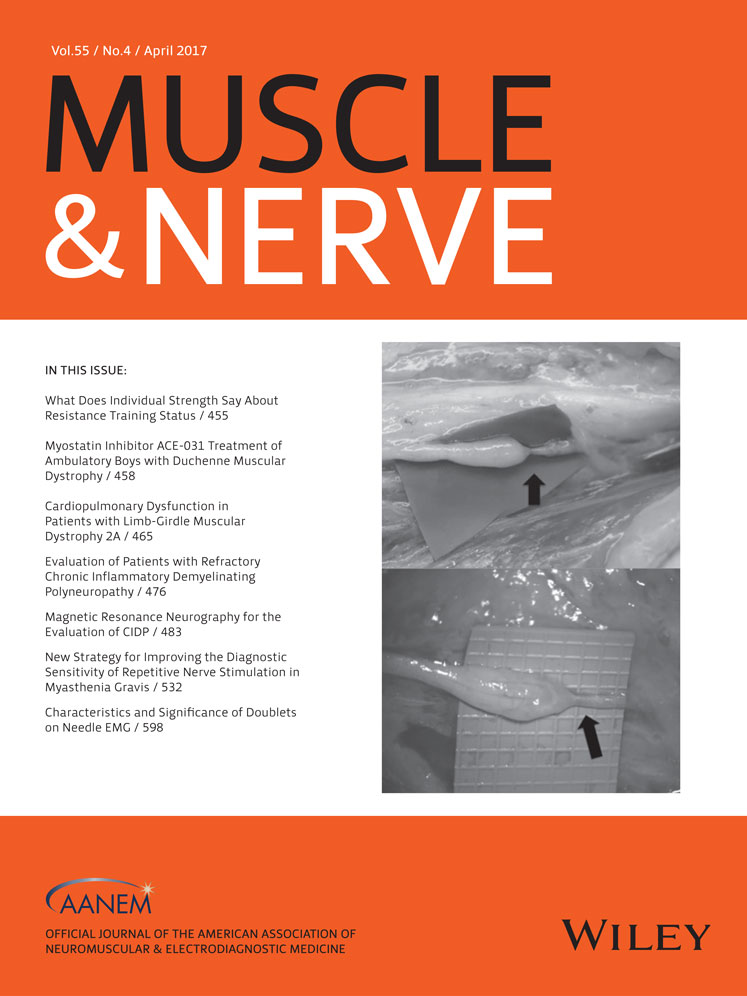Modeling functional decline over time in sporadic inclusion body myositis
This study was supported by Novartis Pharma AG.
ABSTRACT
Introduction: The ability to individualize recommendations or expectations of disease progression based on a patient's unique characteristics has merit for use in sporadic inclusion body myositis (sIBM). Methods: Fifty-five subjects with sIBM completed a battery of strength and functional outcomes at 2 study visits. These were used to develop mathematical models of disease progression in patients with sIBM for use in clinical and research settings. Results: The 6-minute walk test (6MWT) distance declined by an average of 27.5 meters (12%) per year. Significant factors that predict 6MWT were knee extension and plantarflexion strength and body weight, whereas the ability to stand from a chair was impacted by elbow extension strength. Stepping up on a curb was influenced by the patient's age at diagnosis and by knee extension. Statistical models to predict functional decline in sIBM were developed. Conclusion: Statistical models help explain the complex factors that influence decreased walking ability and other functional activities in sIBM. Muscle Nerve 55: 526–531, 2017




